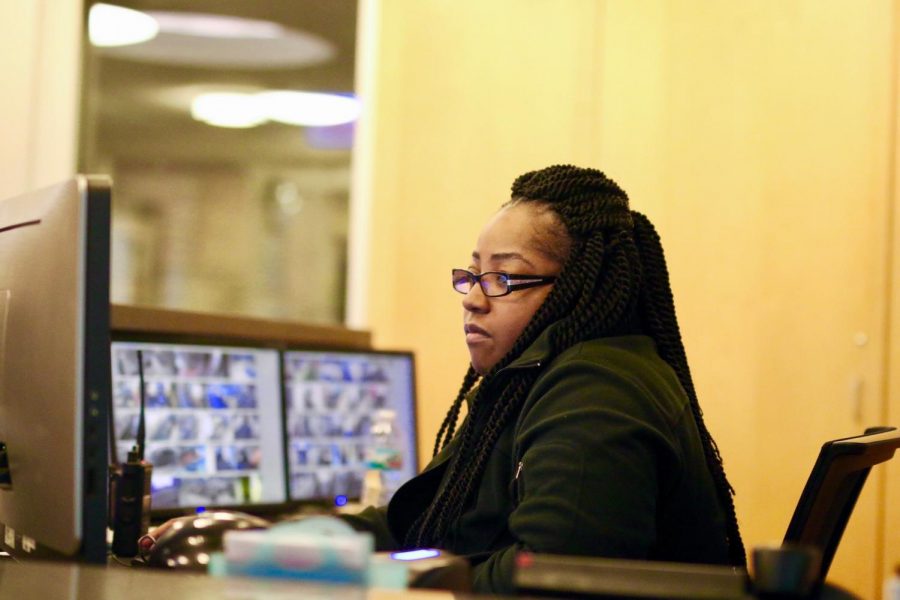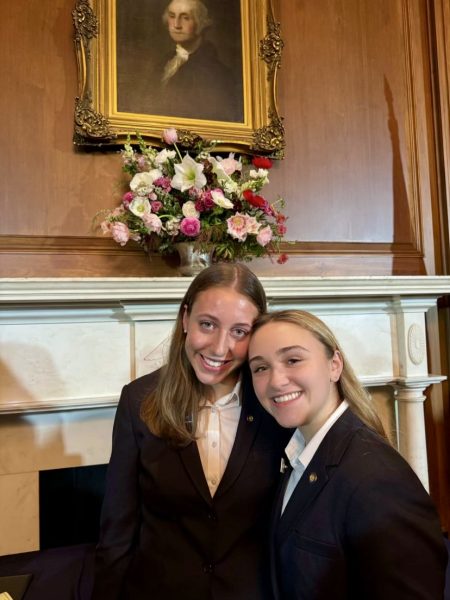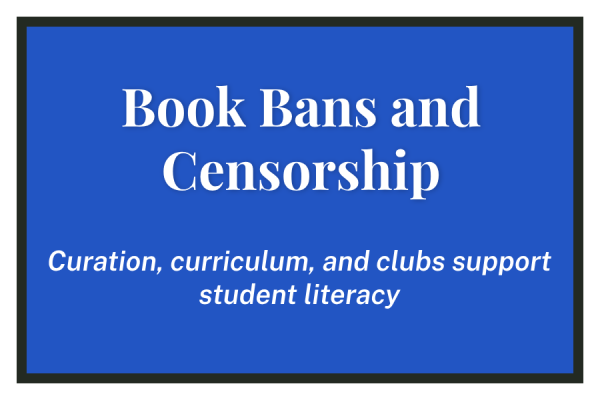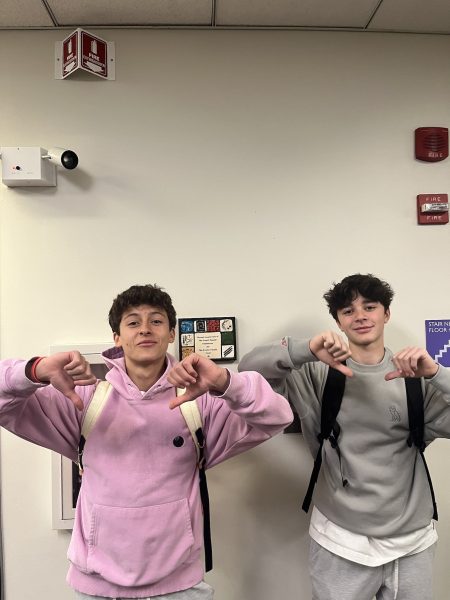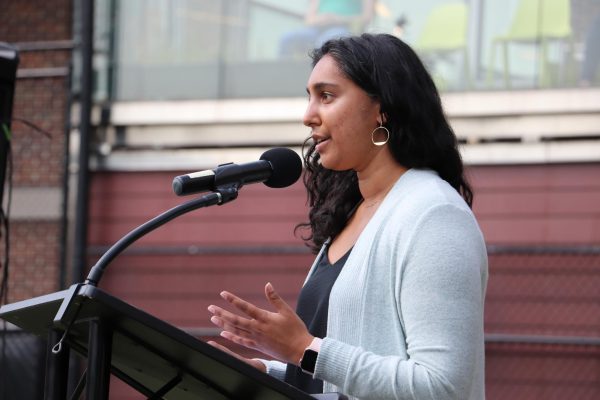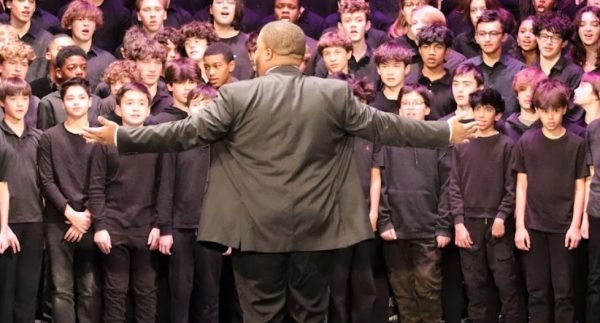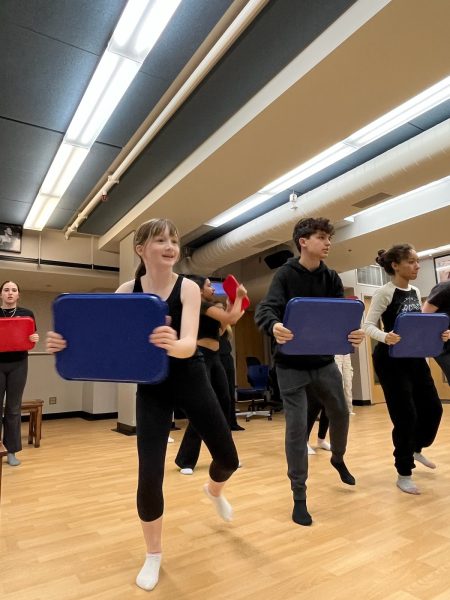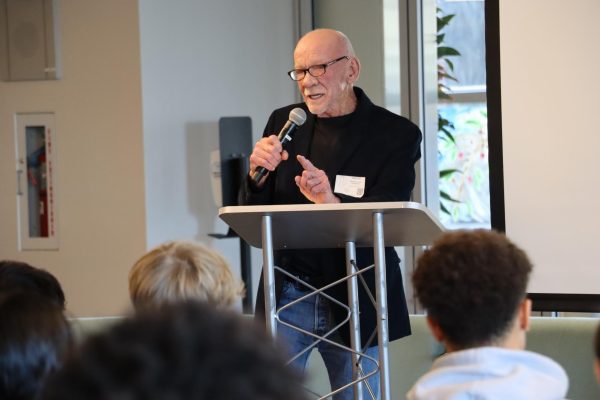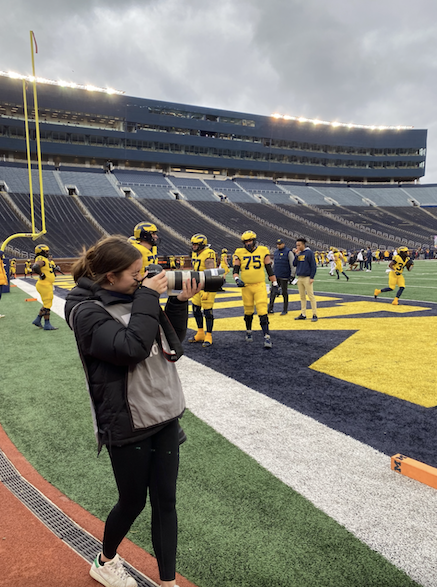#ENOUGH
Preventing Parkland at Parker
Photo credit: Lauren Hughes
Parker security guard Rebecca Lockett monitors the surveillance feed from the security desk.
In the wake of the recent mass shooting at Marjory Stoneman Douglas High School in Parkland, Florida, the issue of security in schools has, once again, become a major national concern, and Parker is no different.
Earlier this month, the Parker administration assisted and supported students in organizing a walkout and subsequent rally and march in support of stricter gun control laws, in the hopes that such laws will prevent another mass school shooting. But what concrete steps has the administration taken to deter or prevent a Parkland style shooting at Parker?
In 2012, right after the Sandy Hook School shooting, Paris Rosenthal ‘15 wrote an article in “The Weekly” about security at Parker, stating that “as a result of the Newtown, CT school shooting, Parker has focused on security in an effort to continue work that has been underway for a number of years. . . . The horrible tragedy at Sandy Hook School has only moved the time table quicker.”
According to Principal Dan Frank, the efforts that were hastened in 2012 included redesigning the entrances on Webster and Clark. “It was the level of concern that both the adults who work here, as well as the parents, had about life and the world,” Frank said. “It was almost the post-9/11 fragility of what could happen.”
The 2012 changes included the issuance of Radio-Frequency ID cards to allow all students, faculty, and staff to electronically scan into and out of the building. Although according to Abad, the requirement to scan ID cards is one of the essentials of Parker’s security, students can easily get away without doing so.”
“How do you make the entrance of the school safe for our students,” pondered Frank, “and at the same time still try to make the school seem like a welcoming, friendly place to be?”
In 2012 Parker also increased its security staff to six guards, which, according to Rosenthal’s article, “took place because it is important to manage from near the door instead of only at desks.”
A few weeks following the February 14 Parkland shooting, there was another active shooter incident at Great Mills High School in Maryland. Both Marjory Stoneman Douglas and Great Mills were protected by armed resource officers. While the resource officer in Parkland allegedly hid outside the school while the shooting unfolded, the resource officer in Maryland shot and killed the shooter before there was any loss of life.
Terry Bolden, a security guard at Parker, explained that at his former place of employment, a medical university, guards wore bullet proof vests and utility belts with radio, keys, and handcuffs. “Here, it’s a little more easy,” Bolden said, “while there it was more strict.”
When asked why Parker does not use armed security guards, which according to Director of Facilities Rick Dusing, is an administrative decision, Frank said, “Handguns are far less accurate than a longer rifle, and it’s easy to make a mistake and hit the wrong person.”
While Dusing sees Frank’s point, he also recognizes another side to the situation. “Well, I think you always worry about a bad decision being made,” Dusing said, “but the advantage is that the bad people would know you have armed guards in the building.”
For a number of years, Parker has held lockdown drills to prepare for an active shooter in the school. “After every drill we do,” Frank said, “we ask for feedback from faculty and staff, so we can make things really attuned.”
Since the issuance of the federal “Guide for Developing High Quality School Emergency Operations Plans” in 2013, the Department of Homeland Security, FEMA, and the Department of Education have advocated for the implementation of a “Run-Hide-Fight” protocol for schools that face an active shooter event. According to SafePlans, “this represents a paradigm shift from the antiquated lockdown only approach.”
Despite this recommendation from the federal government, Dusing seemed to favor the current “shelter in place” technique. Dusing said, “I think you’re better off hiding in place and hope that the police get here.”
When asked about the Run-Hide-Fight protocol, Frank stated that he was unaware of it. Once it was explained to him, Frank then said “There may be something in that that we should look at.”
The most important thing, to Frank, is to make sure that “everyone knows one another.” This consists of students talking to guidance counsellors and voicing concerns about fellow classmates.
When asked whether the school would be prepared to deal with a shooter with an AR-15, such as those that struck Sandy Hook and Parkland, Frank responded with a puzzled look. “That is a tricky question,” Frank said. “I have to think about that.”



